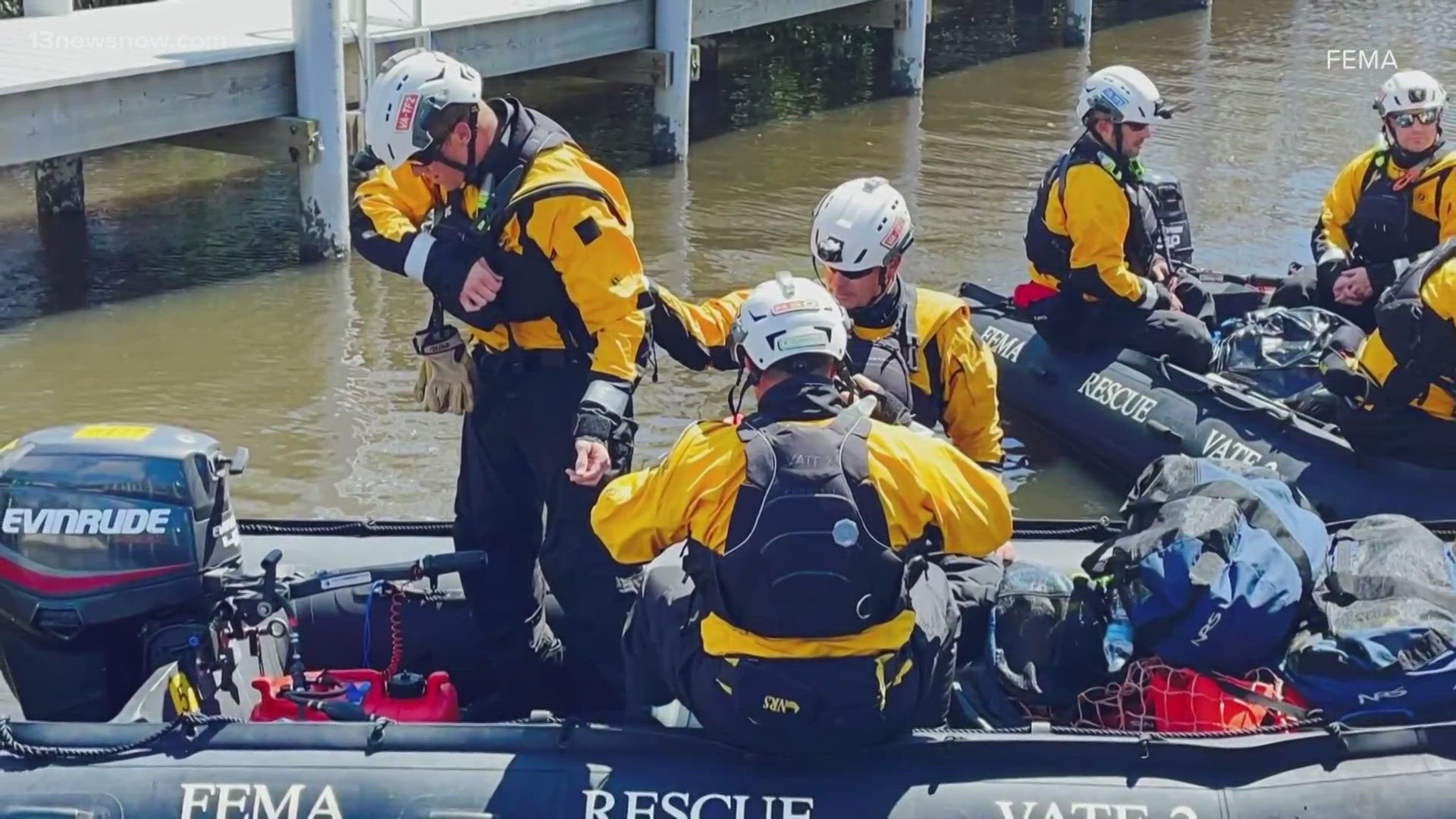VIRGINIA BEACH, Va. — They’ve pulled thousands of survivors out of harm’s way when disaster strikes, but now the FEMA National Urban Search and Rescue Response System says they're the ones that need help.
Mike Hopkins, the Program Manager for Virginia Task Force 2 said even though they are the most deployed team in the system, they haven’t gotten a bump in funding since 2005.
With NOAA issuing its most aggressive hurricane season outlook yet, Hopkins said shoring up their resources is more important than ever.
Team members from Task Force 2 have searched for survivors in the rubble of the Oklahoma City Bombing in 1995 and 9/11 in 2001.
They've taken stranded homeowners to safety in the aftermath of Hurricane Katrina in 2005 and Hurricane Ian in 2022.
"Any type of disaster, whether it’s man-made or natural," said Hopkins. "Within four to six hours, we have to be on the road going to wherever they need us."
But as the call for National Urban Search and Rescue Teams to respond increases by 33%, their funding stays the same. Hopkins said the Task Forces have been operating off the same budget level since 2005, despite increased labor and equipment costs, the expansion of mission scope and the increased frequency of deployments.
"So there was a little bit of bump in 2005 to purchase vehicles," he said. "We’re talking trucks that are almost 20 years old and same with a lot of our equipment, purchased in 2005, In those years, there’s been a lot of innovation, a lot of new equipment, better equipment and because our funding has pretty much stayed the same since then, for 19 years, it’s been hard to keep up with that."
Now, our task force in Hampton Roads, along with the 27 others across the country are asking for an additional $16 million added to the US&R annual budget, putting them at $56 million. They're backed by a bipartisan coalition of Congressional lawmakers, including Congresswoman Jen Kiggans (R) and Congressman Bobby Scott (D).
Hopkins said right now they’re getting roughly $1.3 million every year when in reality it takes about $2 million a year to operate. He said the other funds are being supplemented through grants and localities.
"We’ve squeezed the orange as far as we can squeeze it, there’s just no more juice to get," he said.
With NOAA’s most aggressive hurricane season outlook yet and our proximity to Florida, Hopkins said they have to be ready, and being ready costs money.
"For 19 years, we haven’t been the squeaky wheel. We’ve made do with what we’ve had or what has been given to us and we haven’t really raised a bunch of noise, but like I said, it’s just gotten to the point where we just can’t put out any more," he said.
Since their inception in 1992, US&R teams have responded to 128 incidents, searched 375,182 structures and rescued 16,488 survivors. VA-TF2's first deployment was the Oklahoma City Bombing and their most recent was Hurricane Idalia in 2023.
In 2013, VA-TF 2 began water rescues, but their main mission remains structural collapses. They have 218 people on the team from 12 different agencies, with up to 80 responding at a time.

